Rumors about helicopters spraying chemicals go viral globally alongside COVID-19
Hoax mutated from one information environment
Rumors about helicopters spraying chemicals go viral globally alongside COVID-19

Hoax mutated from one information environment to the next as it crossed borders and language boundaries

A rumor that helicopters would spray disinfectant to kill the new coronavirus in Italy made its way across social networks and messaging platforms before mutating into varying informational strains around the globe. Beyond Italy, which first experienced the rumor on March 10, the DFRLab confirmed its spread to more than 30 other countries over the course of two weeks — a classic but unfortunate example of how the current infodemic of COVID-19 misinformation spreads alongside the virus itself.
Broadly speaking, the ongoing infodemic is rapidly evolving. In March 2020, a prominent Georgian doctor amplified a forged quote attributed to a pro-democracy activist claiming he was happy that the elderly would die from the virus. Meanwhile in Ukraine, rumors spread through Telegram channels suggesting that smoking offered resistance to COVID-19.
The notion of conducting aerial chemical spraying to combat disease outbreaks is not without precedent. Previously, aerial spraying was used to kill mosquitos in Miami during the zika outbreak while China used drones to spray disinfectants in populated areas due to COVID-19. Instances such as these added a certain amount of plausibility to this particular rumor.
While the DFRLab could not determine the original source of the rumor, we tracked its spread across dozens of countries. The analysis utilized open-source information to deduce how the rumor mutated and track its global movements.
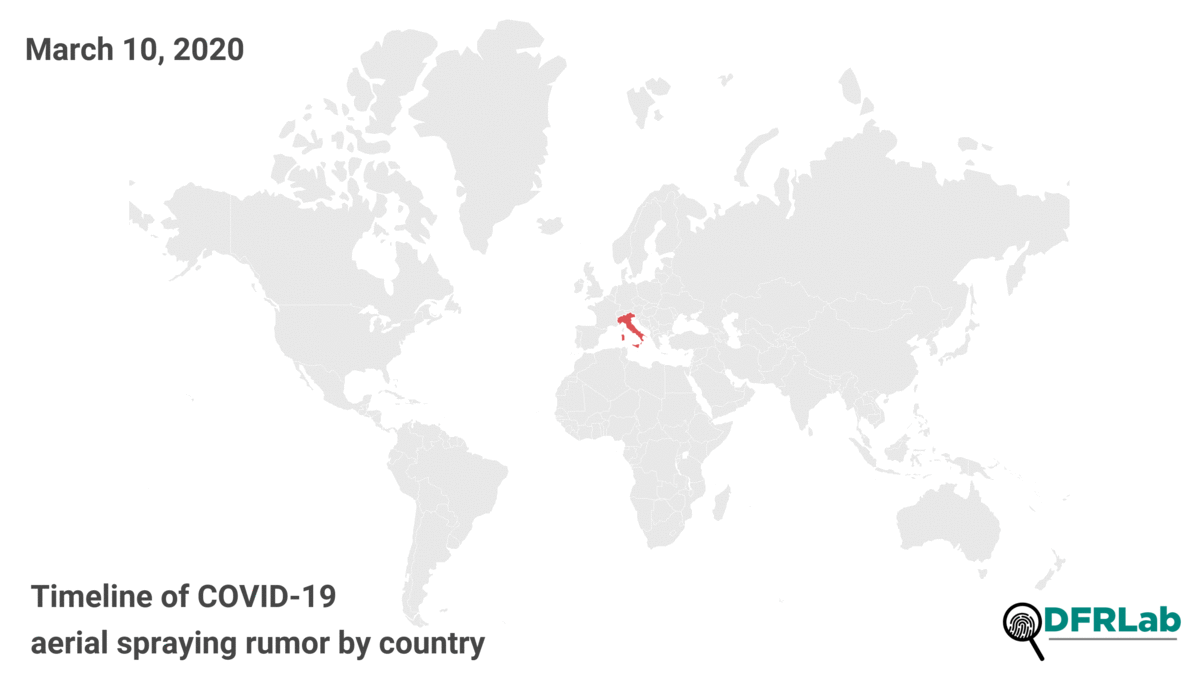
Evolution of a rumor
Based on a review of social media platforms, the rumor most likely first appeared in Italy on March 10. On that date, Facebook users shared screenshots of forwarded WhatsApp messages containing the rumor. “From 23:00 tonight until 05:00 tomorrow morning, a helicopter will disinfect everything,” the message stated in Italian. “I recommend you not to leave clothes, shoes and other things outside and especially take care of dogs!”
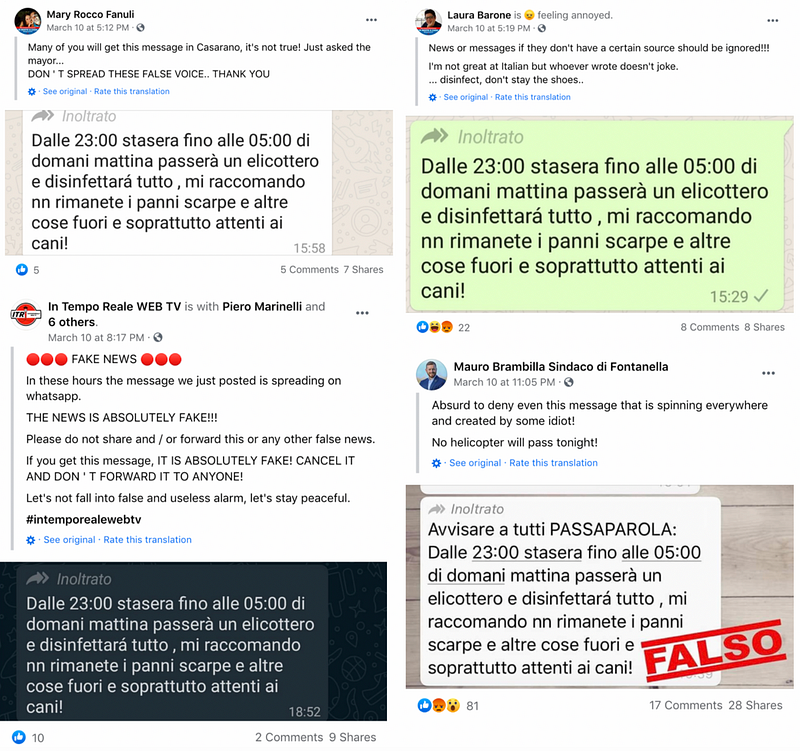
The following day, the same information appeared in Georgia as an image shared on Facebook. By this point, the text of the message had mutated slightly. While the Italian version asked people “not to leave clothes, shoes and other things outside and especially take care of dogs,” the Georgian language version asked them “not to leave laundry outside and not going outside themselves,” omitting the part about the shoes and the dogs.

Meanwhile, Russian-language versions of the message posted in Moldova on March 14 and in Uzbekistan on March 16 were identical to each other, with the Moldova version containing an additional sign-off wishing readers good health.

Russian-language messages detected in Russia and Kazakhstan also referenced key phrases such as “23:00 and until 5:00,” “medicine for disinfection,” “windows and balconies should be closed” and “reported from the military unit,” differing very little from the version first seen in Italy. In at least one other case that originated on Telegram then circulated on VK, however, it featured additional language about schools and parents being punished if children were not kept at home:
For security reasons, school raids will be held from tomorrow! If suddenly the child ends up in school for reasons such as extra classes or classes, schools will be punished. But if children are found in shops, on buses, on the streets, parents will be punished with a fine! Therefore, send this information to parental chats very urgently !!!!

Mutant misinformation strains
The language contained in the original rumor continued to mutate as it traveled globally. For instance, different versions appeared in South Africa, the U.S. and Russia, varying in terms of the timing of the spraying, where it will take place, the type of helicopters involved and their number. In Russian-language versions, the time mentioned was from 11pm until 5am. In South Africa, there was no mention of the time the disinfection will start, but the end time was 10:05am. In the United States, the message varied from state to state: a Facebook user in New York mentioned “tonight from 11:40 pm” while in Texas another Facebook user wrote, “after twelve o’clock at night.”
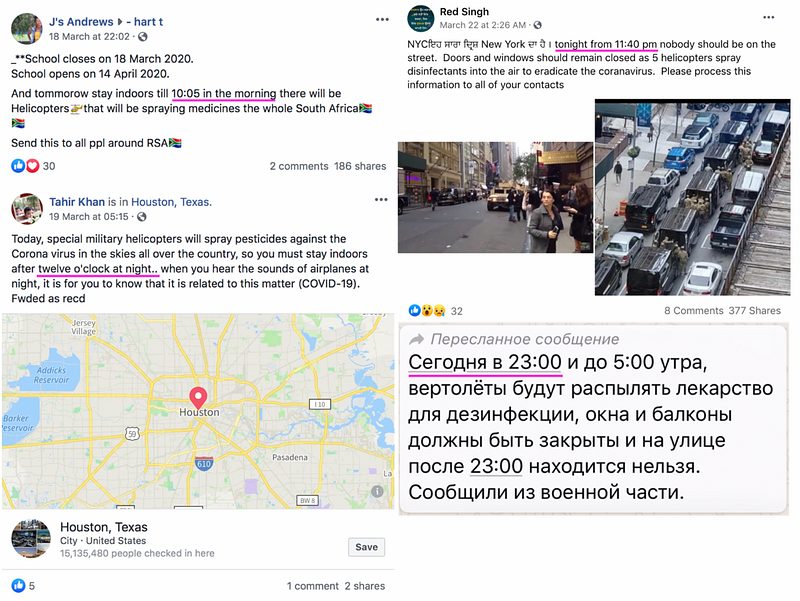
These differences became a common factor in subsequent iterations of the rumor. In Germany, the message mentioned “5 helicopters.” In Spain and Italy, it was a single helicopter, while another version in Moldova simply wrote “helicopters” plural.
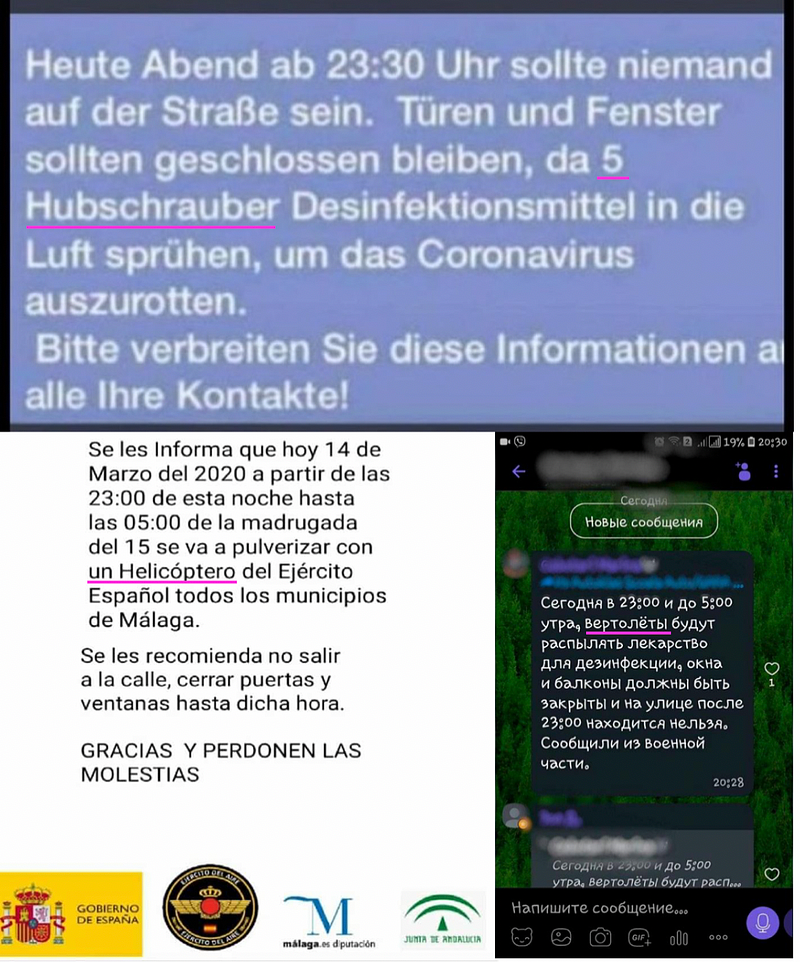
There were also differences in what substance would be sprayed. Some iterations in the U.S. and Italy emphasized the use of disinfectants, while some Russian versions referenced medicine. In Malaysia, it was pesticides, which made the least sense, as the virus is not transmitted by insects.
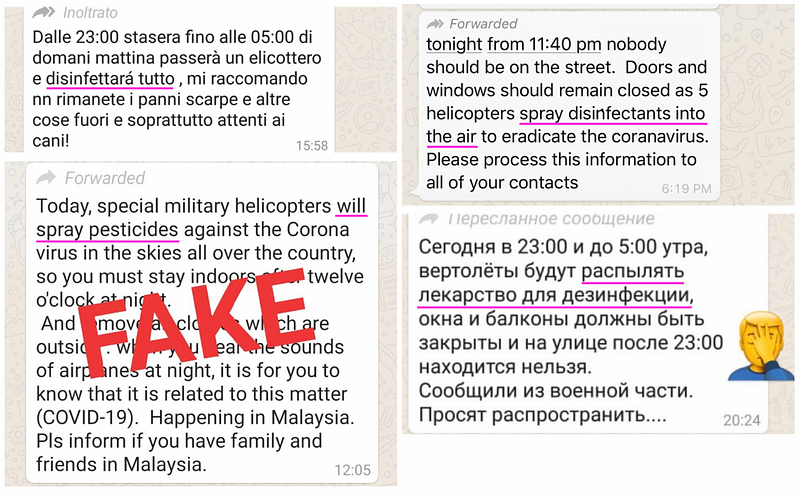
This case study shows how rumors can travel faster than the virus itself, mutating into different informational strains while spreading globally. False information needs context and linguistic nuance to adapt to a new region and language space successfully, which causes a certain degree of mutation each time it hops from one locale to the next. Social networks and messaging platforms provide the channels to spread, making them thrive in the time of infodemic. The global virality of a single rumor shows how misinformation, like COVID-19, knows no boundaries.
Nika Aleksejeva is a Research Associate, Baltics, with the Digital Forensic Research Lab.
Kanishk Karan is a Digital Forensic Research Associate with the Digital Forensic Research Lab.
Follow along for more in-depth analysis from our #DigitalSherlocks.

